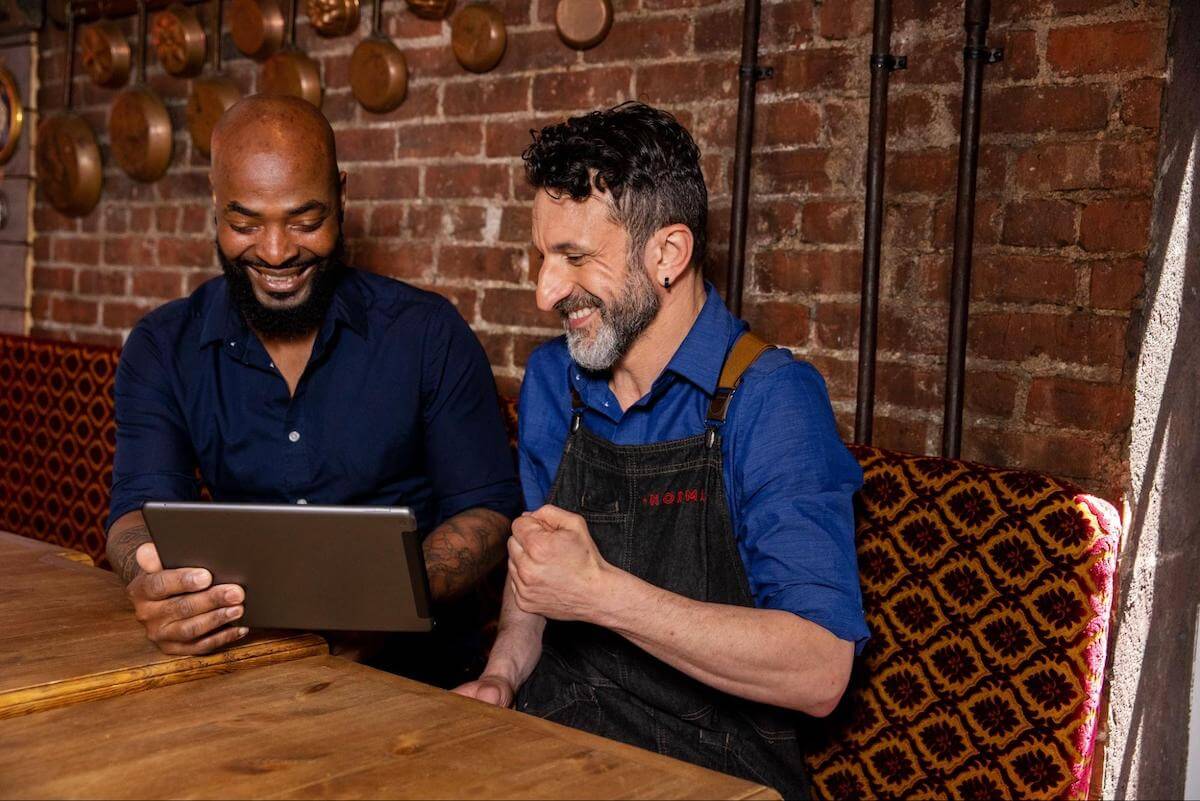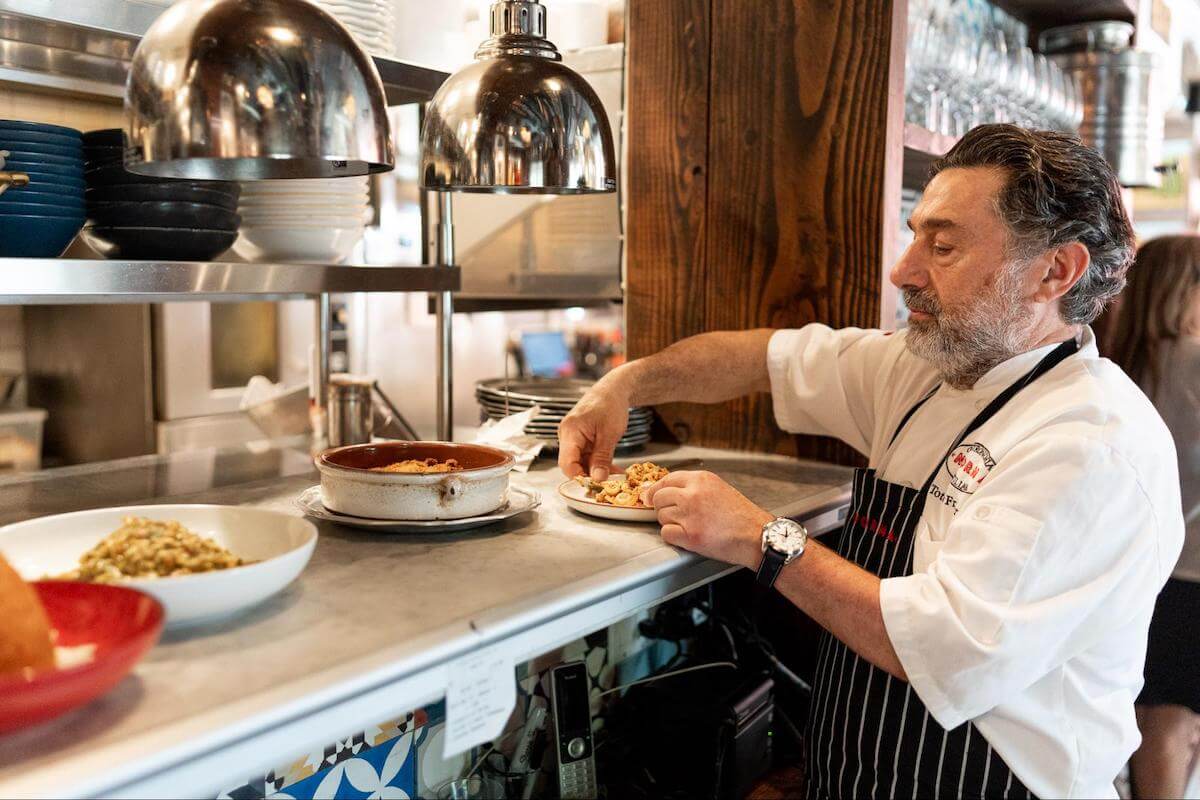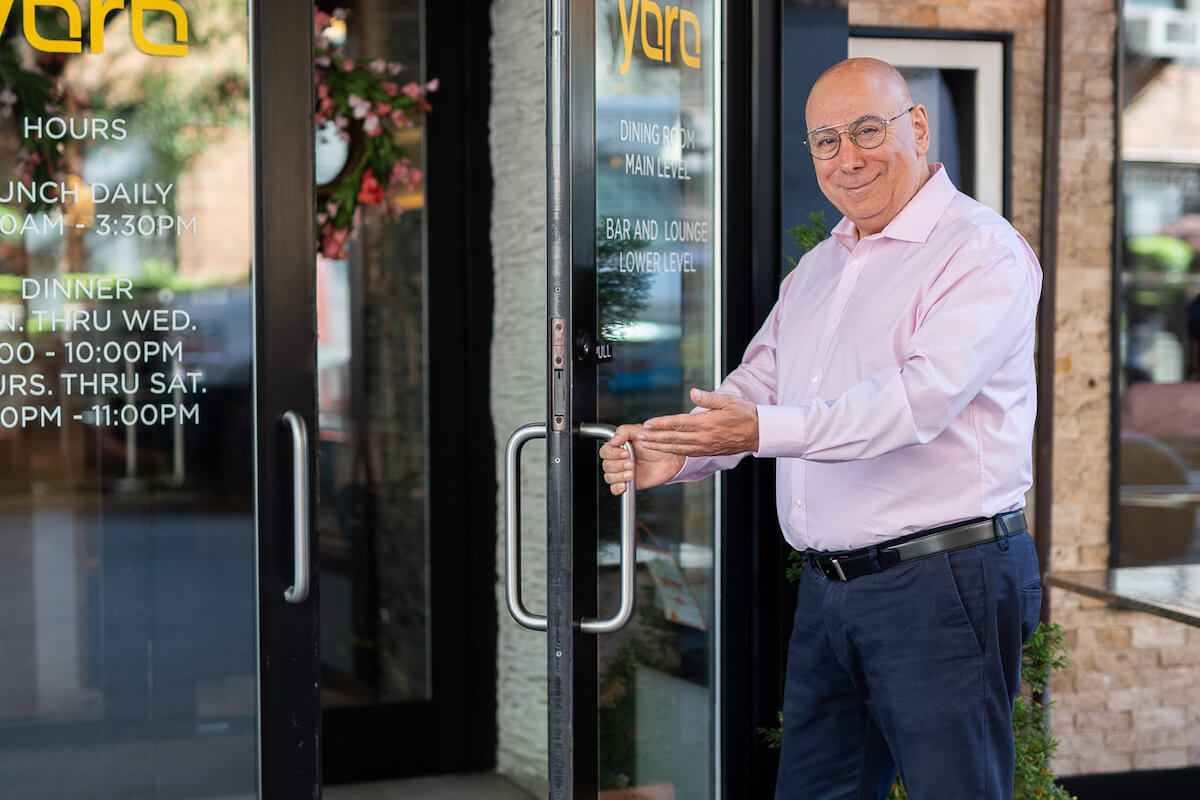22 key restaurant positions: Roles and responsibilities
Skip the article and turn takeaways into action by scheduling a call with our team.
Running a successful restaurant requires a skilled, dedicated team made up of people with specialized skills who are given specifically delegated tasks. Naturally, a restaurant’s size and specific needs will dictate just what restaurant positions are necessary. However, there are well-established positions in the restaurant industry for a reason, and they work for a reason.
Sorting out just who is responsible for what is crucial when organizing a restaurant. When everyone is clear on their role, things can run smoothly. A restaurant of any size has a lot of moving parts, so keeping those parts working in harmony is how top-notch restaurant service is done.
There’s no need to reinvent the wheel; following a proven formula is a solid way to build your team, as well as to successfully advertise restaurant jobs when you’re hiring. We’ll detail some of the most important and common restaurant positions, covering all areas of the restaurant. Without further ado, let’s hop in.
Management positions

Effective management is the cornerstone of a successful restaurant. The management team is responsible for overseeing all aspects of the business, from hiring and training restaurant staff to creating marketing strategies and ensuring the smooth operation of daily activities. Below are some key management positions in a restaurant.
Owner
The restaurant owner is the driving force behind the restaurant, responsible for the whole enchilada … no pun intended. Naturally, this isn’t a hired position, since the owner is often the one doing the hiring to begin with. Some of an owner’s responsibilities may include:
- Hiring and firing staff
- Developing training programs
- Developing and executing marketing plans
- Ensuring compliance with health and safety standards, as well as other legal requirements
- Handling payroll and employee benefits (especially when the owner doubles as manager)
Often, owners have to put in a lot of work during the opening stages of a restaurant, as relationships need to be built and a clear vision needs to be solidified. An owner is often the face of the establishment to other restaurant industry players, like suppliers, vendors, and other restaurateurs.
General manager
The general manager is responsible for the day-to-day operations of the restaurant and plays a vital role in managing all staff. They oversee the different departments, e.g., front-of-house and back-of-house, to ensure they’re working in sync and that all staff are supported. A general manager holds a great deal of responsibility, usually second only to the owner. Some of a general manager’s responsibilities can include:
- Creating work schedules
- Managing inventory and supplies
- Overseeing customer service and customer satisfaction
- Working with kitchen staff on menu planning and pricing
- Managing finances, including budgeting
A general manager is the owner’s second in command and acts as the bridge between owner and employees. In some establishments, especially smaller ones, an owner may also take on the role of the general manager.
Assistant manager
As the name suggests, the assistant manager assists the general manager. If there are tasks the general manager doesn’t have time for or needs help with, these get delegated to the assistant manager. The assistant manager needs to be aware of how everything works in the restaurant just like the general manager does, since they’ll often need to step in when the general manager is unavailable.
Food and beverage manager
Not every restaurant has a food and beverage manager However, those that do rely on the food and beverage manager to work closely with the back-of-house to deliver a high-quality customer experience. A food and beverage manager may be responsible for:
- Developing and updating menus
- Monitoring food quality and presentation
- Managing food and beverage costs, profitability, and pricing
- Sourcing ingredients and managing inventory
- Training kitchen staff
- Monitoring food safety compliance
Front-of-house positions
As the customer-facing part of the business, the front-of-house is all about customer service. Front-of-house staff rule the dining room and are the link between customers and the kitchen. The front-of-house can look very different depending on what kind of restaurant you operate. Fine dining establishments go much heavier on front-of-house staff than casual restaurants, for example, because more hands on deck means more attention spent on each customer.
Host/hostess
The host or hostess is usually the first face a customer sees when they walk in the door. The host is responsible for seating customers, curating waitlists and taking reservations, handling phone calls, and communicating with wait staff about seating. This is often an entry-level position for someone new to the industry.
Server
You probably know what a server is, but we’re here for definitions. A server takes customer orders, inputs them in point-of-sale (POS) systems, and brings food and drinks to customers. Being a good server requires excellent people skills, patience, knowledge of the menu, multitasking abilities, and a keen eye for customer needs.
Bartender
Bartenders tend bar, as in they’re responsible for pouring drinks, especially alcoholic beverages. If a restaurant features a bar, they’re also responsible for managing the bar, serving customers at the bar, and more. The number of bartenders that are necessary is entirely dependent on a restaurant’s needs. Should there be a need for more than a few bartenders, a bar manager acts as the head of the bar.
Barista
Baristas are responsible for making coffee and are most commonly found in cafés or breakfast/brunch-forward restaurants. Because coffee-based beverages have evolved to take on some seriously complex forms, a barista can bring unique skills to the table by being a coffee specialist. They can help take strain off of busy bartenders and create drinks that can elevate a restaurant’s caffeine game.
Maitre d’
A maitre d’ (maitre d’hotel in French) is most comparable to a host or hostess, but they have much more responsibility. They’re the backbone of a fine dining restaurant’s front-of-house and are responsible for the dining experience, customer satisfaction, and front-of-house staffing, including training and oversight. Because the customer service aspect of fine dining restaurants is a major selling point and customers often have high expectations, the maitre d’ ensures that the bar remains very high in the dining room and customers are well looked after.
Back-of-house positions

Without the back-of-house, a restaurant is nothing. This is where all food preparation happens, where dishes are washed, where inventory is stored and managed, and much more. It’s the engine of the restaurant. These restaurant positions work closely together and can form strong bonds due to working shoulder to shoulder in what can feel like being under siege during busy times, so the personality of these employees matters a lot.
Head chef
Every restaurant needs a head chef. The head chef is the captain of the kitchen, responsible for all aspects of the food served. They supervise the kitchen and delegate tasks to line cooks and prep cooks. The head chef is often closely involved in inventory management and the creation of menu items. Being a head chef requires extensive culinary knowledge, experience in a professional kitchen, and management skills, since they’ll be in charge of other workers in the kitchen. Depending on the size of the restaurant, the head chef may do a lot of cooking or very little, instead delegating tasks.
Executive chef
An executive chef is a head chef but a rank higher, and they’re not found in every restaurant. They’re most common in fine dining establishments or in restaurants that have multiple locations, as they oversee all back-of-house operations. In some cases, the position of kitchen manager is folded into an executive chef’s job. How exactly an executive chef operates within a restaurant varies by company organization. But if a head chef is the captain of the back-of-house, then an executive chef is the admiral.
Sous chef
The sous chef is second in command to the head chef. They are responsible for a great deal of the cooking of customers’ orders, and also for delegating tasks to prep cooks and line cooks. A sous chef needs to know as much of what happens in the kitchen as the head chef does, since the sous chef must step up should the head chef get sick or simply take a day off.
Line cook
A line cook does a large amount of the grunt work in the kitchen. They cook dishes, and depending on a kitchen’s layout and needs, may be assigned to certain stations, like fryer, grill, stove, or oven. Exactly how a line cook does their job depends greatly on the type of restaurant they’re working at. A short-order cook at a Waffle House, for example, must be a master of the griddle, while a line cook in a high-end establishment may find themselves becoming an expert of the grill.
Prep cook
Prep cooks prepare ingredients for the ease and convenience of the line cooks. Their tasks include chopping vegetables, trimming meats, and generally giving a chef what’s necessary for their mise en place, or their cooking setup. Busy chefs are more efficient if they don’t have to stop and chop onions mid-service, so prep cooks are essential for a kitchen to run smoothly and provide fast service.
Support positions
As there are many tasks that simply must be done in a restaurant, there are many support positions that need to be filled. These support restaurant positions are like crucial plumbing to an establishment’s operations, and they’re extremely valuable team members.
Dishwasher
A dishwasher, well … washes dishes. Without clean dishes and pots and pans, nothing can be done in a restaurant. So this critical role must be filled by someone who’s meticulous in their cleanliness and knows how to operate dishwashing equipment. Well known as an entry-level position, dishwashers often work their way up through the organization. It’s a great way for those new to the industry to get their foot in the door. Obviously, they’ll need patience, a strong work ethic, and an eye for sanitation since everything from glassware to plates to silverware has to be spotless.
Busser
Bussers clean and clear tables. A good busser works well with servers and helps clear tables as quickly and cleanly as possible to ensure a fast turnover in the dining room. Like dishwashers, this is an entry-level position and bussers are often new to the restaurant industry. Bussers are crucial to keeping the front-of-house clean and running smoothly.
Food runner
Food runners deliver food from the kitchen to customers. While this is often the purview of servers, in especially busy restaurants a food runner can free up a server to handle more customer orders while the runner does the actual delivering of the food. They help keep an eye on presentation in terms of garnishes and otherwise pretty plating, and ensure customers get the correct order.
Delivery driver
Delivery drivers can play a critical role in restaurants that do a lot of delivery business. While third-party apps play a large role in the modern delivery market, hiring a delivery driver can cut costs related to third-party fees and help make delivery more profitable.
Barback
Barbacks support bartenders in a number of ways and are especially valuable in busy bars. They help pour drinks, organize the bar, manage the glassware, change beer kegs, and keep the bar tidy. They’re the second in command to a bartender and don’t usually take customer orders.
Specialized positions
A restaurant can have any or all of these positions, depending on their needs. Below are some of the more common specialized restaurant positions.
Sommelier
A sommelier is a wine expert. They work at fine dining restaurants and curate the wine collection, suggest wine pairings to customers, and explain everything there is to know about wine to curious customers. A sommelier can be an excellent investment for a restaurant with an extensive wine menu, as high-end wines can be some of the most profitable menu items a restaurant has. Sommeliers are formally trained and certified and really, really need to know their stuff.
Pastry chef
A pastry chef makes desserts. While the name implies that they simply make pastries, they’re certainly not limited to baking. As a dessert specialist, a pastry chef is the master of all sweet treats customers might crave after a meal. Not all restaurants have a pastry chef, but those that do can hone in on their dessert game—since being famous for dessert is a pretty good look for a restaurant.
Mixologist
A mixologist is basically an advanced bartender. They create cocktails—from classic or vintage cocktails to creative new ones that can attract customers who are chasing new flavors. High-end bars or restaurants would do well to employ a mixologist who can strengthen a restaurant’s cocktail game. As cocktails are often exceptionally profitable, a mixologist can be a very valuable player in a restaurant. They need deep knowledge of liquor, cocktail-making, and flavor compatibility.
When your restaurant positions are covered, it’s all systems go

When all restaurant positions are working together in harmony, it’s a thing of beauty, like a symphony or a carefully orchestrated dance. But that can only happen when all employees are well-trained and knowledgeable—and if they’re given the right tools to do their jobs.
If you’re looking to upgrade your front-of-house toolkit, there’s no better place to look than Yelp for Restaurants. Yelp Guest Manager, for example, makes table management, reservations, check-ins, and waitlists a breeze, and it syncs seamlessly with some of the most popular POS systems out there. Yelp Kiosk can take a load off of busy hosts and let customers check in and seat themselves. And Yelp Connect helps restaurants reach more customers than ever before.
Want to see how it all works? Curious if this power combo is right for you? Reach out to us for a free demo, and we’ll take you for a test drive. Once you’ve got your team in place and have put the right tools in their hands, you’ll be off to the races.